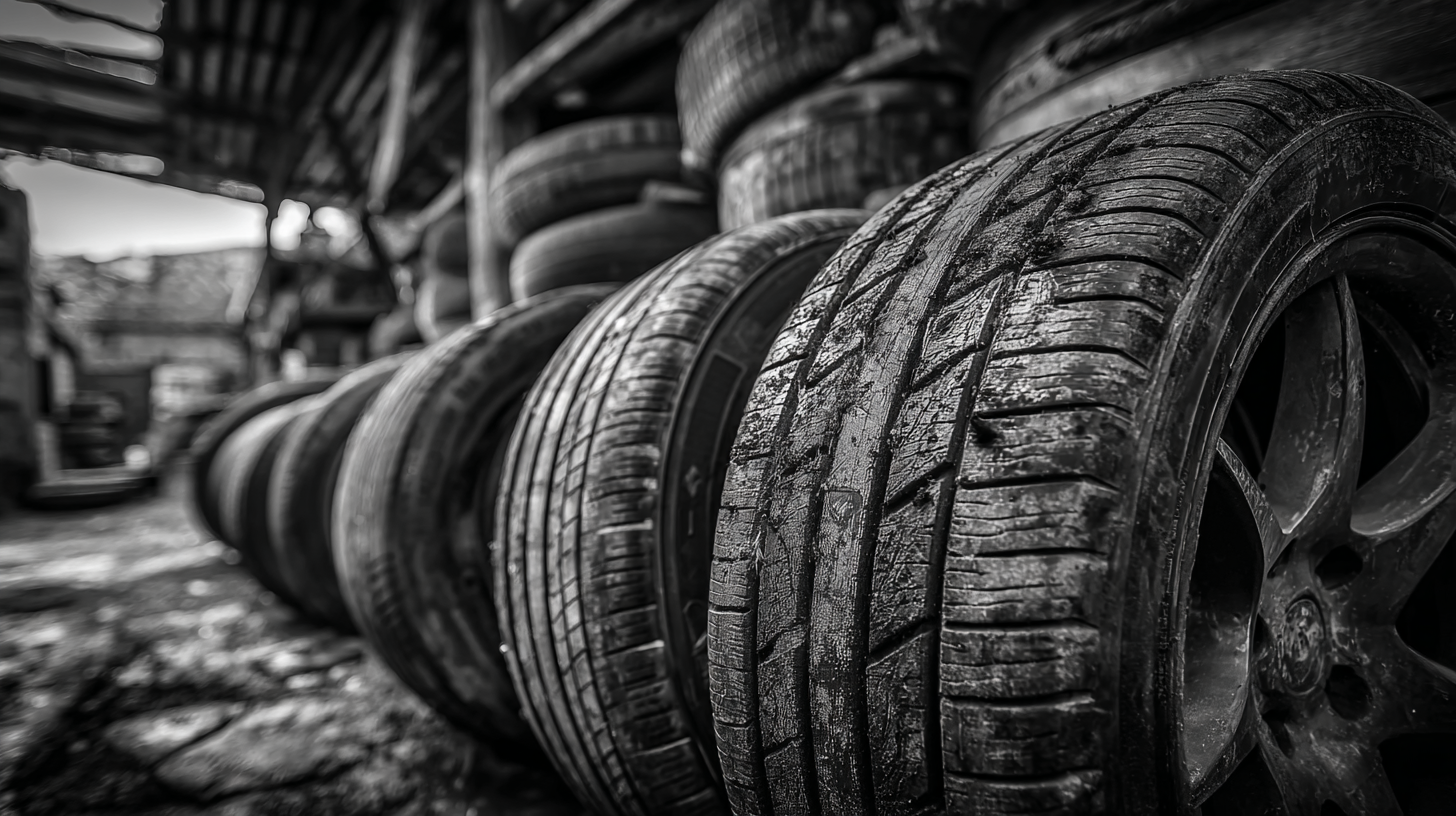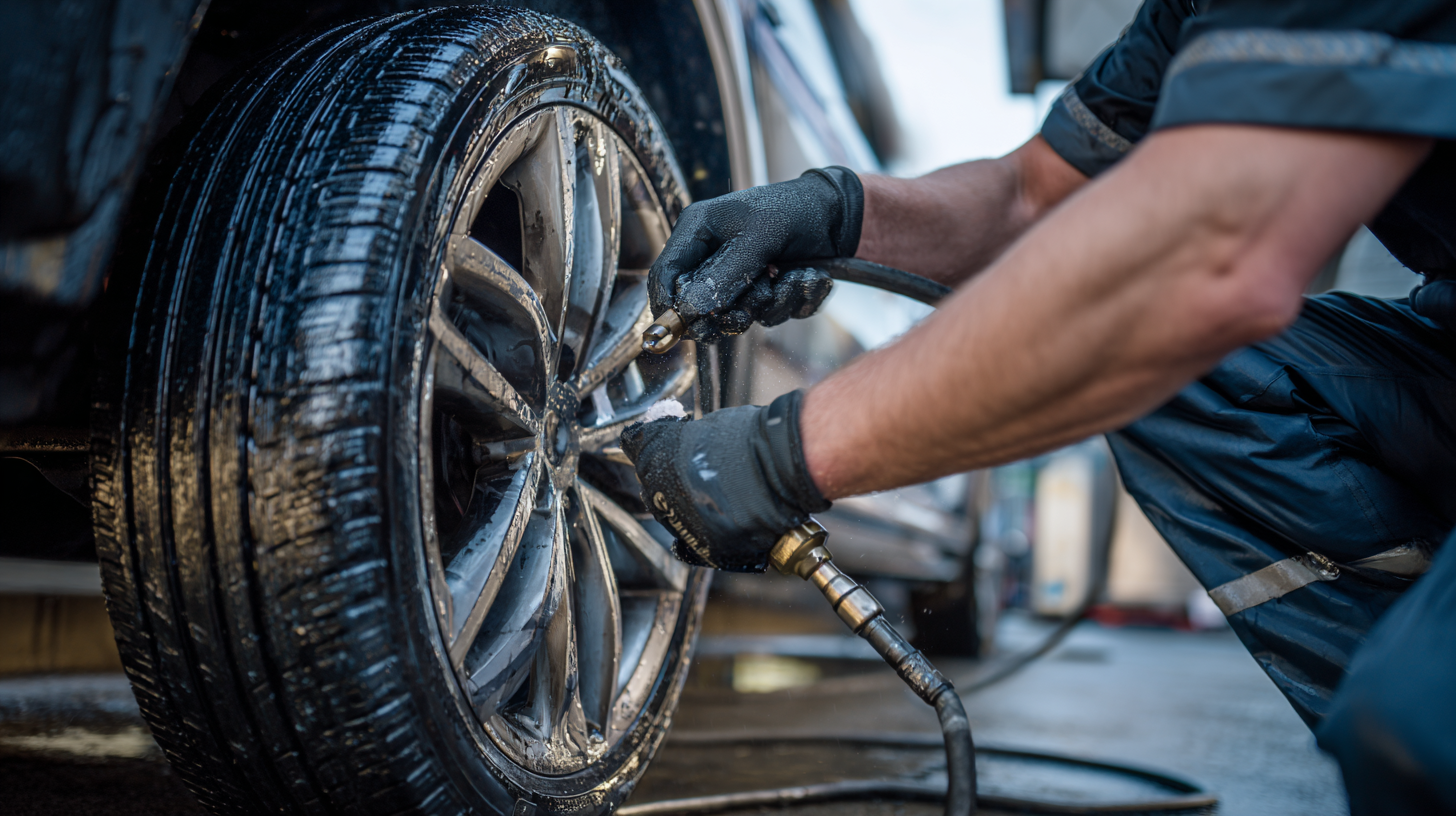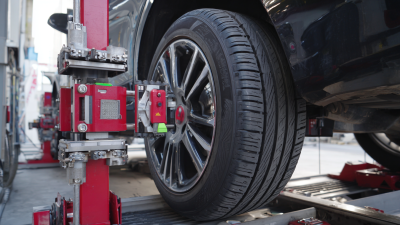The Ultimate Guide to DIY Car Tyre Repair Techniques for Every Driver
In the realm of automotive maintenance, "car tyre repair" has emerged as an essential skill for drivers looking to ensure their safety and reduce potential costs. According to the Tire Industry Association, approximately 18% of vehicles on the road have at least one under-inflated tire, which significantly affects handling and fuel efficiency. Moreover, a report from the American Automobile Association highlights that a flat tire is one of the leading causes of roadside emergencies, accounting for about 20% of such incidents. With many drivers proactively seeking to address these issues themselves, understanding various DIY repair techniques becomes vital. This guide delves into effective methodologies for car tyre repair, empowering individuals with the knowledge to tackle common tire-related issues and enhance their driving experience. In a world where DIY solutions are increasingly favored, mastering these skills not only promotes self-sufficiency but also contributes to overall road safety.

Understanding the Common Types of Tyre Damage and Their Causes
Understanding the common types of tyre damage is crucial for every driver, as it enables timely repairs and prolongs the life of your tyres. One prevalent type of damage is punctures, which often occur from sharp objects like nails or glass on the road. These small injuries can lead to slow air leaks or complete deflation if not addressed promptly. Drivers should regularly check their tyres for any signs of punctures and maintain proper tyre pressure to mitigate the risk.
Another common issue is sidewall damage, which can result from hitting curbs, potholes, or debris. Such damage compromises the structural integrity of the tyre and may not always be repairable. It is essential to inspect the sidewalls for cuts, bulges, or anomalies that could indicate a problem. Additionally, tread wear is a significant concern, which typically results from over or under-inflation, misalignment, or improper rotation practices. Regularly monitoring tread depth and ensuring even wear can prevent unexpected blowouts and enhance overall safety on the road. Understanding these common types of tyre damage empowers drivers to take proactive measures, ultimately leading to safer driving experiences.

Essential Tools for DIY Tyre Repair: What Every Driver Should Have
When it comes to DIY tire repair, having the right tools is essential. According to a report by the Rubber Manufacturers Association, approximately 80% of tire problems can be solved at home, given that drivers are equipped with essential repair tools. A basic tire repair kit should include a tire plug kit, a tire pressure gauge, a portable air compressor, and a jack. These items not only facilitate quick fixes but also empower drivers to take charge of their vehicle maintenance, potentially saving them both time and money in emergency situations.
In addition to the basic tools, investing in a tire sealant can be a game changer. Research from the Tire Industry Association indicates that using a sealant effectively can help drivers avoid being stranded. Moreover, a sturdy tire iron and a breaker bar can make changing a flat tire significantly easier. By equipping yourself with these essential tools, you not only enhance your capability to handle tire issues but also contribute to safer driving. Being prepared is not just about convenience; it's about ensuring that you can confidently address any tire-related challenges that may arise on the road.
Step-by-Step Guide to Repairing Punctures Using a Plug Kit
When it comes to maintaining vehicle safety, being prepared for tyre punctures is essential for every driver. Utilizing a plug kit is an efficient way to repair punctures yourself, saving both time and money. According to the Tire Industry Association, nearly 80% of all tyre failures are due to punctures, underscoring the importance of knowing how to address such issues. To begin the repair process, first locate the puncture—usually marked by a visible nail or screw. Clean the area around the puncture using a reamer, which helps prepare the hole for proper sealing.
Tips for a successful repair include ensuring that the tyre is properly inflated before you begin and having all your tools at hand, including the plug insertion tool and rubber plugs. After inserting the plug with a twisting motion, make sure to trim any excess length for a flush finish. It's also advisable to apply tyre sealant as an added measure of security, which can further prevent air loss and prolong the usability of the repair.
It's crucial to remember that a DIY repair should only be a temporary fix. According to the Rubber Manufacturers Association, tyres that have sustained repairs should be monitored closely and professionally inspected to ensure safety. Regular checks on your tyres can reduce the likelihood of blowouts and ensure a smooth driving experience.
How to Use a Tyre Sealant: Advantages and Disadvantages
When considering the use of tyre sealants for DIY car tyre repairs, it is essential to weigh their advantages and disadvantages. Tyre sealants are designed to provide a quick, temporary fix for punctured tyres by sealing the breach. This method can be highly beneficial for drivers who may not have immediate access to a spare tyre or professional help. The convenience and speed of application make it a popular option, especially during emergencies, giving drivers peace of mind on the road.
However, there are important drawbacks to consider. While tyre sealants may effectively seal small punctures, they can sometimes lead to inconsistent results. In some cases, the applied sealant might not create a watertight closure, similar to certain surgical methods that face challenges in achieving perfect wound closure. Additionally, over time, sealants can degrade, leading to new issues such as imbalanced tyres or difficulties during future repairs or rotations.
**Tips:** For optimal results, ensure your tyre is clean and free from debris before applying the sealant. It’s also wise to read the product instructions carefully to understand the limitations of the sealant you choose. Remember that while sealants are a great temporary solution, they should not replace regular tyre maintenance or professional repairs when necessary.
When to Seek Professional Help: Recognizing Beyond DIY Repair Limits
When it comes to DIY car tyre repairs, knowing your limits is crucial. While many minor issues such as small punctures, air leaks, or valve replacements can be tackled at home, several situations necessitate seeking professional assistance. For instance, if your tyre shows signs of severe damage, like sidewall bulges or deep cuts, it’s essential to avoid a DIY approach. These types of damage can compromise the structural integrity of the tyre, leading to potential safety hazards while driving.
Additionally, if a tyre has been significantly worn down or has reached the end of its lifespan, DIY fixes will not remedy the underlying issue. It's also advisable to consult a professional if you're unfamiliar with the tools and techniques required for proper repairs. Underestimating the complexity of certain repairs can result in further damage to the tyre or even your vehicle. Recognizing when to turn to a specialist not only enhances safety but also ensures your car maintains optimal performance on the road.




